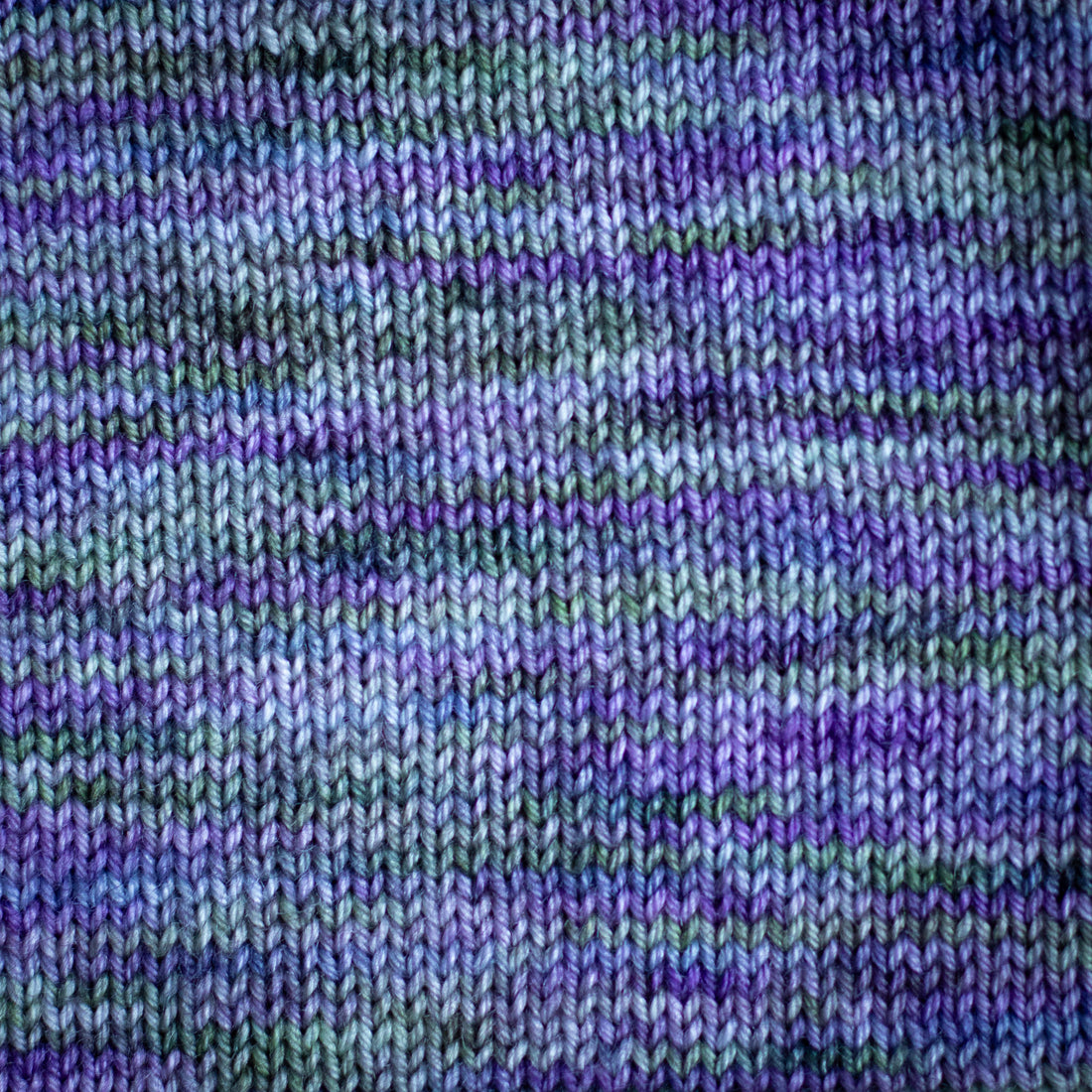In the world of knitting, selecting the right yarn can be just as important as the pattern itself. Hand-dyed yarn, with its exquisite colors and unique variations, has gained immense popularity and is available on a wide range of yarn blends in our shop. You can find variegated, speckled and semi-solid colourways to choose from.
However, have you considered the benefits of alternating hand-dyed yarn while knitting? In this article, we’ll explore the advantages and reasons to alternate hand-dyed yarn, along with a step-by-step guide on how to do it effectively.
Benefits of Alternating Hand-Dyed Yarn
1. Color Consistency: Hand-dyed yarn often features beautiful, unpredictable color shifts. Alternating between two or more skeins ensures a smoother transition between colors, preventing abrupt and noticeable changes in your project.
2. Texture and Thickness Control: Hand-dyed yarns may have subtle variations in texture and thickness. Alternating yarn skeins allows you to blend these variations seamlessly, resulting in a more polished finish.
3. Yarn Economy: Skeins of hand-dyed yarn can vary, even when from the same batch. By alternating, you can make the most of your yarn and minimize waste, ensuring that no two skeins are left partially unused.
4. Less Frogging: Frogging (undoing your knitting) can be frustrating, especially when you have to unravel an entire project due to color discrepancies. Alternating hand-dyed yarn reduces the chances of this happening, saving you time and effort.
Reasons to Alternate Hand-Dyed Yarn
1. Dye Lot Differences: Hand-dyed yarn may come from different dye lots, resulting in subtle or not-so-subtle differences in color. Alternating skeins ensures that these variations are harmoniously integrated into your project.
2. Skein-to-Skein Variation: Even within the same dye lot, hand-dyed yarn can exhibit variations in color distribution. Alternating skeins mitigates this issue, creating a more cohesive look.
3. Large Projects: For larger knitting projects like sweaters, blankets, or shawls, alternating hand-dyed yarn becomes crucial. It maintains uniformity throughout the piece, making it visually appealing.
How to Alternate Hand-Dyed Yarn
Now that we’ve explored the benefits and reasons for alternating hand-dyed yarn, let’s delve into the practical aspect of doing it:
1. Choose Your Skeins: Select two or more skeins of hand-dyed yarn that you intend to use in your project. Make sure they are from the same dye lot, if possible.
2. Alternate Rows or Rounds: To achieve a smooth transition between skeins, alternate every few rows (for flat knitting) or every few rounds (for circular knitting). Start by knitting one row or round with one skein, and then switch to the next skein for the following row or round.
3. Blend the Transition: When transitioning from one skein to another, consider knitting a few stitches with both strands of yarn held together. This helps to blend the colors seamlessly.
4. Carry Yarn Up the Side: To avoid excessive weaving in of ends, carry the unused yarn up the side of your work when alternating. Make sure to twist the two strands together at the beginning of each row/round to secure them.
5. Pay Attention to Tension: Maintain consistent tension while alternating between skeins to prevent uneven stitches.
6. Block Your Project: After completing your knitting, block your project to set the stitches and colors, which will enhance the overall appearance and texture.
By following these steps and understanding the benefits and reasons for alternating hand-dyed yarn, you can elevate the quality and aesthetics of your knitting projects. Hand-dyed yarns are treasures in the world of knitting, and with proper alternating techniques, you can make the most of their beauty while achieving stunning results in your creations. Happy knitting!

